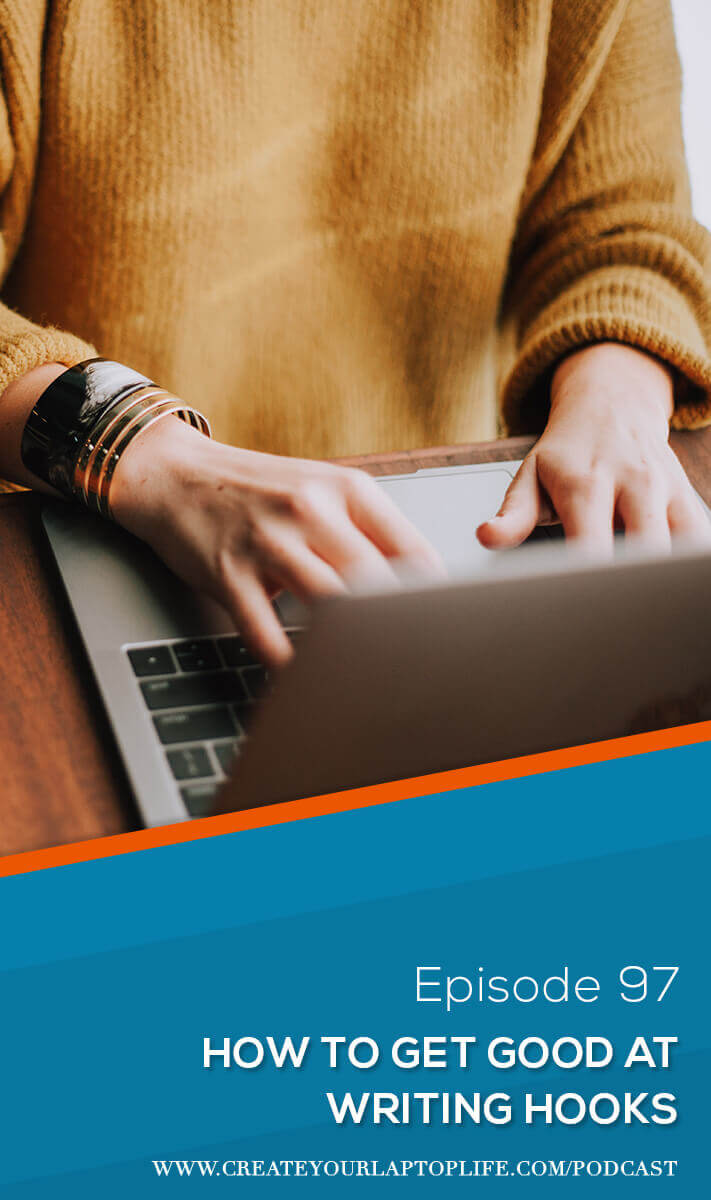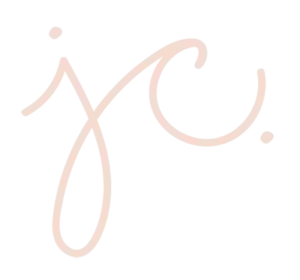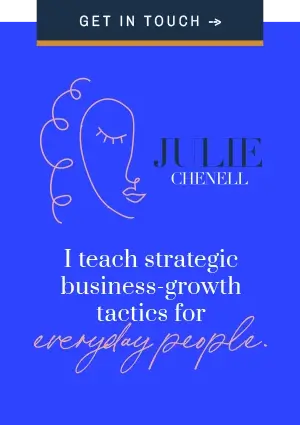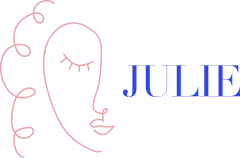Subscribe On:
Full Transcript:
Today I want to talk about one of the hardest parts of marketing. And that is writing a good hook. So as much teaching as I do around copywriting, marketing, talking about hooks and angles and headlines is really tricky. And I’m trying to figure out how to communicate what makes a good hook and what doesn’t.
So here are some of my best ideas, my best advice. I just went through over 300 submissions in one of our coaching programs, it’s called Launch Gorgeous Lite, and we are helping people write a paid workshop, like a low ticket paid workshop. And I went through 300 ideas and the hook was the single worst part of all of it. That’s something that people just don’t know naturally how to do. And I think a lot of people are like, “What do you mean when you say the hook? Are you talking about the headline?” Yes, it could be the headline, and often times you’ll see the hook manifest itself in the headline. But it’s really the sense of what happens when someone lands on the page and they make a decision in 3 seconds or less, “Am I going to continue reading about what’s on this page? Am I going to continue to be interested or am I going to bounce off?” So it’s a combination of the headline, of the design, of the graphics that communicates stay or eh, go.
So when you’re coming up with ideas the hook is most often found in the copy. But again I’m going to say this, I can look at a hook and it can look amazing in copy, but then somebody can put it in a funnel or on a page, and I’m like, “Ooh, you lost it.” It got lost because the design isn’t right, or the picture is distracting, or the colors don’t quite work. So the hook is really the feeling that you communicate to the lead on that page, as to whether or not they’re going to pay attention.
Okay, so the first piece of advice is do not confuse a great hook with being clever. So I saw a lot of people on this thread that I was looking at, and I would say things like, “Hey this is too broad, or this is too vague. This isn’t going to capture attention. I don’t know how this is any different than the 8000 other workshops out there.” So they rewrote it, and instead of writing a hook, they just made it clever, like theme-y. I’m trying to think of an example.
Let’s say you love, whatever, you love Disney. I do love Disney. So I rewrite my headlines all with sort of a Disney theme. Or I try to cleverly disguise a word, or use different words than I would normally do. Clever is not a hook. Clever actually oftentimes over complicates a message. Cleverness usually makes you feel cool, like, ‘Oh cool, look how clever I was when I wrote this.” But the person, it’s very hard to be clever and have the person be like, ‘Oh that was good.” Most of the time it comes off as cheesy. A great hook doesn’t necessarily mean clever. A good hook is understandable in 3 seconds or less. And most things that are clever take longer than 3 seconds to figure out. So when I say that it’s too big or too broad, don’t be clever, clever is not going to work here.
Okay, the second thing is that a good hook is a pattern interrupt. So when they land on the page, there’s something that happens in their brain, that either says, “Ooh, this is different. I haven’t seen this before.” Or “Huh, maybe I should keep reading.” Okay, so something that denotes difference. A lot of people when they’re doing pattern interrupts, they simply do the opposite of what someone expects. So if I am a weight loss coach, and I’m teaching people how to lose weight, my hook, my pattern interrupt is going to be a headline that says, “Never give up cheeseburgers.” It’s a pattern interrupt because it’s not what you expect I’m going to say. And that’s usually enough to get me to keep reading. But it doesn’t always have to be contrarian, it can be.
Another thing that creates pattern interrupt is curiosity. Where they don’t know where you’re going with it. It doesn’t mean they don’t understand what you’re doing, they totally should understand in 3 seconds what you’re saying, but they don’t necessarily understands where it leads, which is why they want to keep reading. Okay, so that’s really, really important.
If I said to you something like, I don’t know, “Write a book in 2 hours.” You instantly know what I’m saying, but you don’t really know the answer, and you don’t really know the end. You’re like, “How is she going to do that?” So it’s that curiosity, and it’s something different, it’s unexpected and you’re going to keep reading.
Now if I said, you know, if I tried to disguise “write a book in 2 hours” to be clever, you know, “Write your bespoke memoir in the same time it takes to watch a Netflix documentary.” Someone would do that right, they would be like, “Oh look, see isn’t that great copy.” No, it’s not. It went from “Write a book in 2 hours” I understand it in 2 seconds or less, to “Write a bespoke memoir in the time it takes to watch a Netflix documentary.” I’m like, that’s like 4 or 5 seconds of me trying to understand. So that is sort of the example of what I’m trying to say here.
Another thing is it should sound interesting, or possibly fun, or sexy. Meaning you want it. You want whatever it is the promise is. Whether it’s weight loss, whether it’s a better marriage, whether it’s a six figure business, whatever it happens to be, you want what it says. Some people they try to write good hooks and they’re like, you know, plan your I don’t know, lets see. “Plan what you’re going to do with your business when you retire.” Nobody wants to do that, it’s not like, “I want to do that.” So you have to be careful when you’re selling things that are not super exciting to do. You have to kind of find the hook that’s like, “Ooh, I do want that.” Without getting so clever that it takes longer than 3 or 4 seconds.
Short headlines are easier to comprehend than long headlines. So don’t make your headline more than 2 lines. In fact, one line is best. If you absolutely have to say what you need to say, you can do a pre headline, you can do a tag line, and then you can design it so those are much smaller, so that someone in still reading the first part very clearly, and then they’re sort of backing off and reading the other pieces.
So kind of as a recap, it needs to be different, it needs to be clear, needs to avoid being too clever, it needs to be understood in 3 seconds or less, it has to have either curiosity or sexy like you want to do what it says, it could be something that’s interesting and fun, it could sound new, different, something you haven’t tried before, it could be going against the grain. So that is how you write a good hook, and a good hook does include copy, but it also means that when you put that copy on the page, that the images and color and design is communicating, it’s all working together to create that same please keep reading, please keep paying attention, please keep listening.
So hopefully that helps, appreciate you all, talk to you soon.









0 Comments